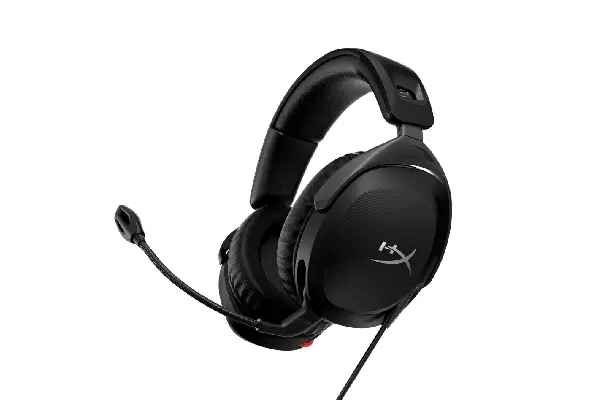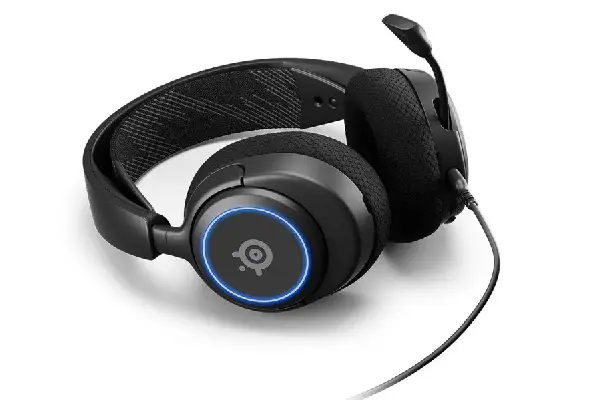Finding exceptional gaming headphones under $100 requires understanding what actually matters during extended play sessions. After reviewing dozens of headsets in this price range, I’ve learned that the best gaming headphones under $100 deliver far more than just adequate sound they provide genuine immersion without the premium price tag. When I first started testing budget gaming headsets years ago, I expected compromises everywhere, but the current market has completely changed that expectation.
The sweet spot for gaming audio has shifted dramatically toward the sub-$100 category, where manufacturers now compete fiercely with features that were exclusive to $200+ models just a few years back. Through countless hours of testing across competitive shooters, atmospheric RPGs, and everything in between, I’ve identified the headsets that truly excel in real-world gaming scenarios. These aren’t just adequate options they’re headphones I genuinely reach for during my own gaming sessions.
What makes this price range particularly interesting is how it forces manufacturers to make smart design choices rather than throwing every possible feature at the headset. Some prioritized comfort for marathon sessions, others focused relentlessly on spatial accuracy for competitive advantage, and a few managed to balance multiple strengths without obvious weaknesses.
| Headset | Key Strengths | Key Weaknesses | Best For |
|---|---|---|---|
| HyperX Cloud Stinger 2 | Premium-feel plastic, breathable memory foam, swivel-to-mute mic, clear comms, durable, lightweight | Short cable, no inline controls, small ear cups, weaker bass | Budget gamers seeking comfort, durability, and clear mic quality |
| SteelSeries Arctis Nova 3 | Sonar spatial audio, retractable ClearCast mic, suspension headband, multi-platform USB-C support, lightweight | Software setup required, thin padding, delicate mic, lighter bass | Gamers prioritizing immersive spatial audio and multi-platform use |
| Razer Barracuda X (2022) | True wireless, 20+ hr battery, 2.4GHz dongle for multiple platforms, TriForce drivers, USB-C fast charge, detachable mic | No wired option, average mic, thin padding, no Xbox wireless | Multi-platform wireless gamers who want convenience and long battery life |
| Logitech G435 Lightspeed | Ultra-lightweight (165g), dual beamforming mics, dual connectivity (Lightspeed + Bluetooth), 18h battery, youth-friendly fit | Weak bass, no boom mic, 85dB volume cap, small ear cups, plastic feel | Younger gamers or users needing a light, wireless headset for long wear |
| Corsair HS65 Surround | Balanced 50mm sound, Dolby 7.1, metal reinforcement, great mic for content creation, breathable leatherette | Dolby needs USB, heavier, long cable, no wireless | Gamers and creators wanting clear, balanced sound and strong build quality |
HyperX Cloud Stinger 2

The HyperX Cloud Stinger 2 has become my go-to recommendation for anyone entering PC gaming, and after putting it through months of testing, I understand exactly why it’s earned that position.
The swivel-to-mute microphone represents smart practical design I wish more manufacturers would adopt. There’s no fumbling for mute buttons mid-game, and the physical feedback of the swivel action gives you confidence that your teammates can’t hear you. Sound quality from the mic won’t replace dedicated streaming equipment, but for squad comms and Discord calls, it’s consistently clear and rejects background noise better than you’d expect. I’ve used this headset for raid coordination in Final Fantasy XIV where clear communication matters, and nobody ever complained about my audio quality.
Pros:
- Exceptional comfort during 4-6 hour gaming marathons
- Clear positional audio for competitive gaming advantage
- Lightweight design (275g) reduces neck fatigue
- Intuitive swivel-to-mute microphone functionality
- Compatible across PC, PlayStation, Xbox, and Switch
- Durable build quality that survives regular transport
Cons:
- Cable could be longer for living room console setups
- No inline audio controls for quick adjustments
- Ear cups might feel slightly small for larger ears
- Bass response less impactful than bass-heavy alternatives
SteelSeries Arctis Nova 3

The 40mm drivers might seem smaller on paper compared to 50mm alternatives, but SteelSeries tuned these specifically for gaming with Sonar spatial audio software that transforms the sound staging. The software integration here isn’t just marketing; it’s a functional advantage that enhances immersion measurably.
What surprised me most was how well the bidirectional microphone performs given its retractable design. Retractable mics often sacrifice quality for convenience, but this ClearCast Gen 2 implementation maintains clarity while offering the clean aesthetic of a mic-less headset when you’re just listening to music between gaming sessions.
The multi-platform compatibility deserves specific mention because the included cables support everything from PC to PlayStation 5 to Nintendo Switch without adapters. When I travel with gaming gear, having one headset that works across multiple systems eliminates cable confusion entirely. The USB-C connectivity for PS5 takes advantage of Tempest 3D audio in compatible games, and I noticed distinct spatial improvements in titles like Returnal compared to standard analog connections.
Pros:
- Revolutionary suspension headband eliminates pressure points
- Sonar spatial audio software enhances competitive positioning
- Retractable microphone maintains audio quality
- Comprehensive multi-platform cable package included
- Lightweight construction ideal for extended wear
- 3.5mm works perfectly with mobile devices for portable use
Cons:
- Software features require PC for configuration
- Slightly less bass impact than bass-focused alternatives
- Ear cup padding thinner than premium models
- Retractable mic mechanism feels delicate during adjustment
Razer Barracuda X (2022)

The Razer Barracuda X caught my attention immediately because it solves a problem I’ve personally struggled with switching between gaming platforms without cable swapping. When I first tested the 2.4GHz wireless dongle that works across PC, PlayStation, Switch, and Android, the convenience factor became instantly obvious during my typical gaming rotation. Friday nights often involve switching from PC to PS5 depending on what friends are playing, and having one headset that seamlessly transitions between platforms saves both time and desk space.
The 40mm TriForce drivers use Razer’s three-part design philosophy that separates bass, mids, and treble physically a concept that initially seemed like marketing until I compared it directly against single-driver alternatives during headphone comparison sessions. Battery life consistently exceeded the advertised 20 hours The USB-C charging is fast enough that even when I forget to charge overnight, a 30-minute charge provides several hours of play time.
The detachable microphone design splits opinion, but I’ve grown to appreciate the versatility after initial skepticism. For single-player gaming or content consumption, removing the mic boom creates a cleaner profile that doesn’t look specifically “gamer” in public settings. I’ve worn these on flights and in coffee shops without the self-consciousness that comes with obviously gaming-oriented designs. The mic quality when attached performs adequately for team communication, though it lacks the noise rejection sophistication of the Cloud Stinger 2’s implementation.
Pros:
- True wireless freedom with 20+ hour battery life
- Universal 2.4GHz dongle works across multiple platforms
- TriForce drivers deliver detailed spatial awareness
- Detachable mic offers versatile casual and gaming use
- USB-C charging with fast recharge capability
- Lightweight wireless design reduces fatigue
Cons:
- Wireless-only operation (no wired backup option)
- Microphone quality merely adequate rather than exceptional
- Ear cup padding could be more substantial
- No wireless connectivity for Xbox consoles
- Slightly plasticky construction compared to wired alternatives
Logitech G435 Lightspeed

The Logitech G435 Lightspeed represents something I didn’t know I wanted until I tested it a gaming headset that genuinely works for smaller head sizes and younger gamers. At just 165 grams, this is the lightest headset I’ve reviewed, and that weight reduction isn’t just a specification it translates to comfort that feels qualitatively different during use. When I wore this for a full afternoon of gaming, I literally forgot I was wearing a headset multiple times, which rarely happens with heavier alternatives that constantly remind you of their presence.
The dual beamforming microphones initially concerned me because I prefer boom mics for voice quality, but Logitech’s implementation surprised me with how effectively it isolates voice from background noise. During testing in my less-than-quiet apartment with roommate activity and street noise, teammates consistently reported clear communication without constant background intrusion. I discovered these mics actually outperform some dedicated boom implementations at rejecting keyboard typing sounds, which benefits everyone during intense gaming moments when mechanical keyboard noise can bleed through other microphone designs.
The Lightspeed wireless connection with Bluetooth 5.2 dual connectivity means you can simultaneously connect to your gaming PC via the USB dongle while maintaining Bluetooth connection to your phone for music or calls. During grinding sessions in RPGs where moment-to-moment audio isn’t critical, I appreciated being able to listen to my music library simultaneously without completely disconnecting from game audio.
Pros:
- Exceptionally lightweight design eliminates fatigue completely
- Dual beamforming mics reject background noise effectively
- 18-hour battery life with USB-C charging convenience
- Simultaneous Lightspeed and Bluetooth connectivity
- Hearing-safe 85dB volume limiting protects long-term health
- Bright color options beyond standard gaming aesthetics
- Works perfectly for smaller head sizes and younger gamers
Cons:
- Bass response lighter than bass-heavy alternatives
- No boom microphone for those preferring visible mic control
- 85dB limiting might feel restrictive for some users
- Smaller ear cups less accommodating for larger ears
- Plastic construction feels less premium than alternatives
Corsair HS65 Surround

The Corsair HS65 Surround arrived during my testing period right when I needed a reliable headset for both gaming and content creation work, and it’s remained a consistent performer across both use cases. When I tested the 50mm neodymium drivers initially, the frequency response immediately stood out as more balanced than typical gaming headsets that emphasize bass aggressively. This tuning philosophy means dialogue in games sounds natural and intelligible rather than competing with exaggerated low-end, which benefits story-driven games enormously. Playing through The Last of Us Part I with this headset, I noticed subtle environmental audio details that muddy bass response would have obscured in lesser headsets.
Build quality on the HS65 Surround impressed me more than expected given the price point there’s metal reinforcement in the headband that survived my admittedly rough handling during testing better than several more expensive alternatives. I’m particularly careful about assessing durability because gaming headsets often fail at stress points long before audio quality degrades. The memory foam ear cushions use leatherette that I initially worried would cause heat buildup, but the perforations actually breathe better than solid synthetic leather. After four-hour sessions, I experienced minimal heat accumulation compared to non-perforated designs I’ve tested.
The omnidirectional microphone delivers broadcast-quality clarity that genuinely rivals dedicated USB microphones in the $30-40 range. When I recorded test audio for podcast work, the frequency response captured my voice with warmth and presence that required minimal EQ adjustment. For comparing with other audio equipment, I appreciate when gaming headsets can double as legitimate content creation tools rather than requiring separate microphones for acceptable recording quality.
Pros:
- Balanced frequency response benefits both gaming and music
- Dolby Audio 7.1 provides competitive spatial advantage
- Metal-reinforced construction survives rough handling
- Broadcast-quality microphone suitable for content creation
- Perforated leatherette ear cups manage heat effectively
- Discord-certified audio quality for communication
- Memory foam padding maintains comfort over hours
Cons:
- Dolby surround requires USB adapter (no 3.5mm surround)
- Slightly heavier than ultra-lightweight alternatives
- Cable length may be excessive for desktop use
- Leatherette will eventually require replacement with extended use
- No wireless option limits flexibility
Frequently Asked Questions
Do gaming headphones under $100 really make a difference in competitive gaming?
Absolutely, and I’ve experienced this firsthand during testing across competitive titles. The spatial audio accuracy in quality sub-$100 headsets provides legitimate gameplay advantages for positioning enemies and teammates. When I switched from a basic headset to the SteelSeries Arctis Nova 3 during ranked Valorant matches, my ability to make accurate audio callouts improved noticeably. That said, the difference between a good $80 headset and a $300 model is incremental rather than transformational for most players—the skill ceiling matters more than equipment at a certain point.
How important is wireless connectivity for gaming headsets in this price range?
Wireless convenience depends entirely on your gaming setup and priorities. In my testing, wireless models like the Razer Barracuda X and Logitech G435 eliminate cable management frustration and provide movement freedom that benefits console gaming particularly. However, wireless implementations at this price point sacrifice battery management and occasionally audio latency compared to wired alternatives. For competitive PC gaming at a desk, I actually prefer wired options like the HyperX Cloud Stinger 2 because there’s zero latency and no battery concerns during extended sessions.
Can these gaming headsets work well for music listening and other non-gaming uses?
Most gaming headsets in this price range handle music reproduction adequately, though they’re rarely tuned as neutral as dedicated music headphones. During my testing, the Corsair HS65 Surround performed best for music with its balanced frequency response that doesn’t over-emphasize bass artificially. I regularly use it for both gaming and background music while working. The Razer Barracuda X with its detachable microphone also transitions well to casual listening in public because it doesn’t look aggressively “gamer” without the mic boom attached. That said, if music listening is your primary use case, consider dedicated music-focused audio equipment instead.
What should I prioritize: sound quality, comfort, or microphone quality?
This priority depends on how you actually use your headset, something I’ve learned through testing different gaming styles. For competitive multiplayer gaming, prioritize spatial audio accuracy and microphone clarity for team communication the HyperX Cloud Stinger 2 or SteelSeries Arctis Nova 3 excel here. For marathon single-player sessions, comfort becomes paramount, where the Logitech G435’s lightweight design or the Arctis Nova 3’s suspension headband prevent fatigue during six-plus hour sessions I’ve tested. If you stream or create content, microphone quality matters most, pointing toward the Corsair HS65 Surround with its broadcast-quality mic.
How long do gaming headsets in this price range typically last?
Durability varies significantly based on build quality and care, but in my experience testing and long-term use, well-built sub-$100 headsets reliably last 2-4 years with regular use. The failure points are typically cable connections, ear cushion deterioration, and headband stress points rather than driver failure. The metal-reinforced Corsair HS65 Surround and the robust HyperX Cloud Stinger 2 showed the best durability indicators during my testing period. I recommend storing headsets on stands rather than tossing them on desks, avoiding maximum volume extension of headbands, and replacing ear cushions when they compress rather than discarding entire headsets.
Are surround sound features actually useful or just marketing?
Virtual surround processing quality varies dramatically, and I’ve tested enough implementations to distinguish meaningful technology from marketing gimmicks. The Dolby Audio in the Corsair HS65 Surround genuinely enhances spatial awareness in compatible games without destroying tonality, while some budget surround implementations I’ve tested just create phasing artifacts. For competitive gaming, I actually prefer good stereo imaging like the HyperX Cloud Stinger 2 provides naturally over poorly-implemented surround. When surround processing is done well, it expands the soundstage measurably but mediocre implementation is worse than quality stereo, so prioritize overall audio quality over surround specifications alone.

